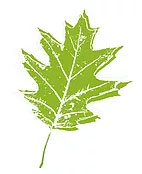Etymology
Scutellaria is from Latin meaning a small dish, tray or platter; lateriflora is fromLatin meaning side-flowering in reference to the one-sided floral racemes of this plant.
Native Habitat
Wetlands ranging from freshwater shorelines to swamps and moist meadows.
Garden Uses
Wetland plant for moist to wet low spots, stream or pond margins, marshy areas. Because of its prolific production of showy blue flowers at a time when relatively few plants bloom in the shade, this is an excellent perennial for the woodland garden.
Overview
Blue skullcap is a low growing (2’- 3’ tall) herbaceous perennial that is native to and thrives in wetlands and moist areas. It is rhizomatous, but not aggressively so. It grows best in part shade, but will tolerate sun if kept moist.
Leaves and Stems
The leaves are thin, opposite, mostly smooth, ovate to lanceolate, with toothed margins. Leaves are dark green above and light green beneath. The square stems are typically hairless, pale green and have a sprawling habit.
Flowers
Tiny, tubular, two-lipped, snapdragon-like, pale blue to lavender (sometimes white) flowers (to 1/3”) bloom solitary or in one-sided racemes, mostly from the leaf axils but occasionally terminal from July to early October. The flowers are covered with short hairs, and the lower lip is flared slightly larger than the upper hood-like lip. The calyx holding the flower has a small ridge-like protuberance at the top. There are four petals (tepals) to each flower.
Fruit/Seed
The calyx swells into a capsule, containing 4 nutlets. The fruit is dry but does not split open when ripe.
Wildlife Associates
The flowers attract native bees. It is bitter and slightly toxic to deer and rabbits.
Propagation
Propagate from seed or root cuttings.
Ethnobotanical Uses
The leaves of blue skullcap have a history of use in herbal medicines as a sedative and tranquilizer and for treatment of a variety of conditions including insomnia, anxiety, convulsions and neurological disorders.
Anecdotal Information
The persistent calyx that is apparent after the flowers fade looks like miniature medieval helmets, thus the common name of skullcap. "Mad-dog" is a reference to the belief that this plant had properties that could cure rabies (this has been disproven).
Sources
Plant Profile by Kathy Kling

